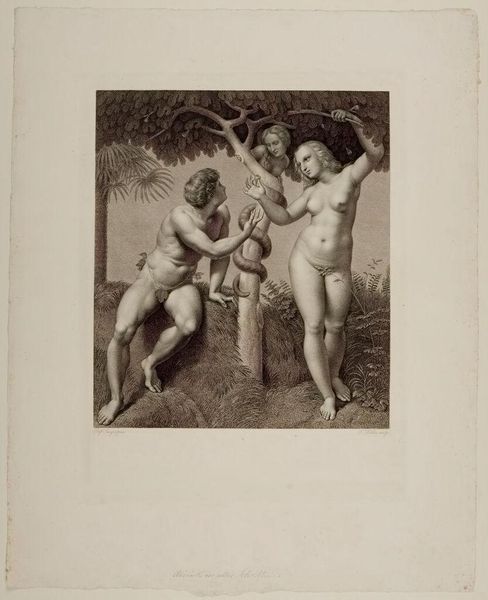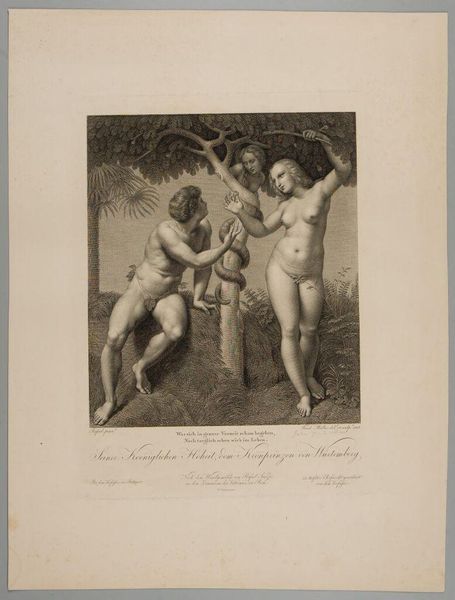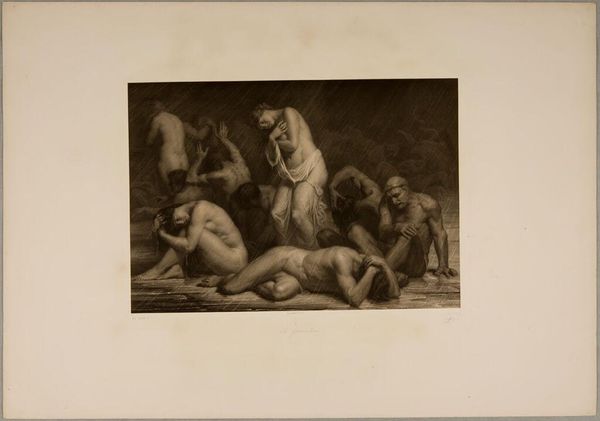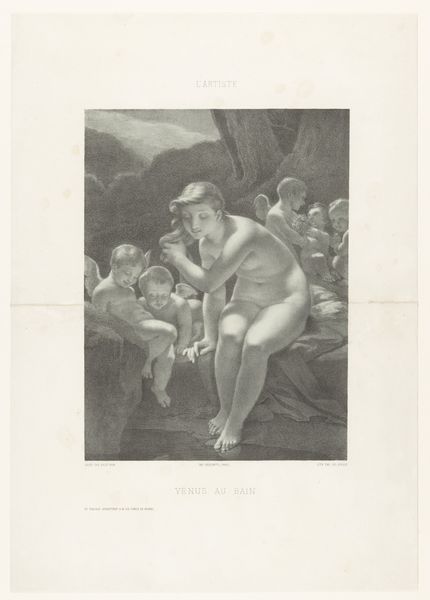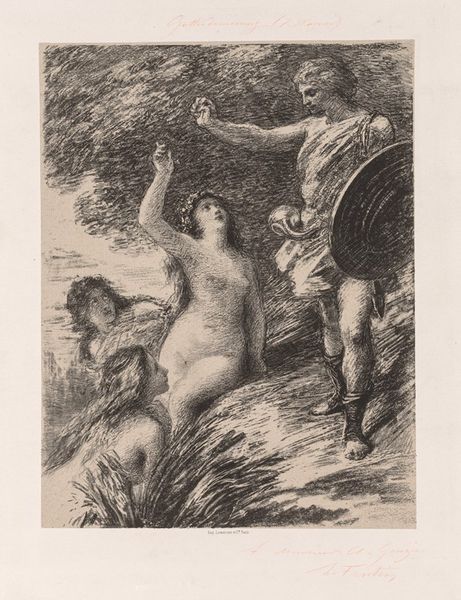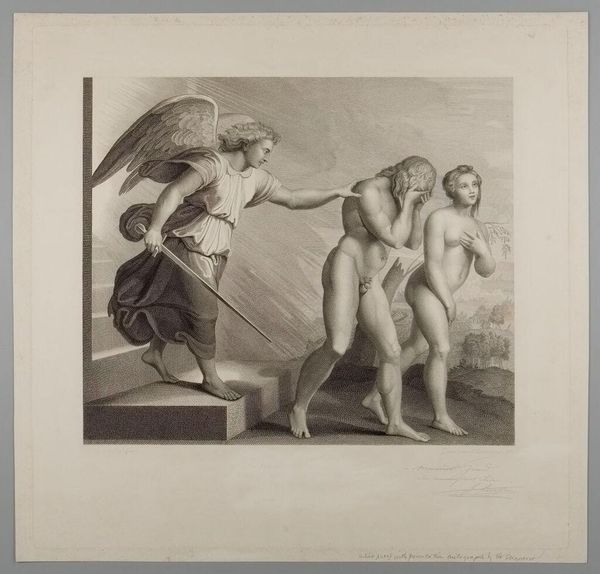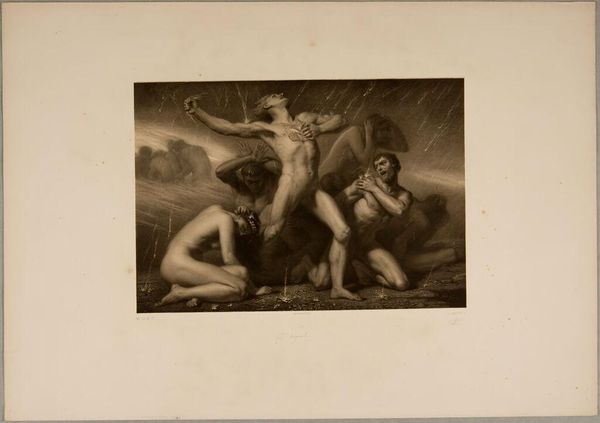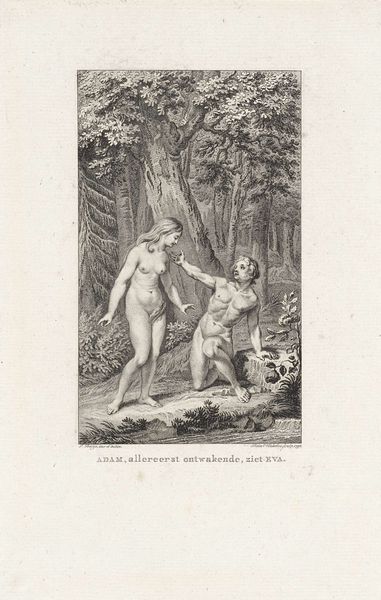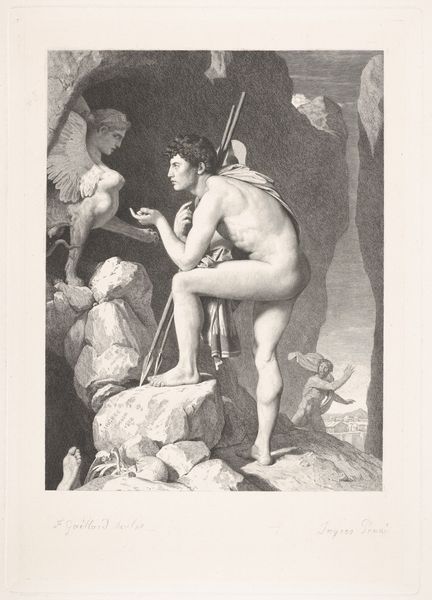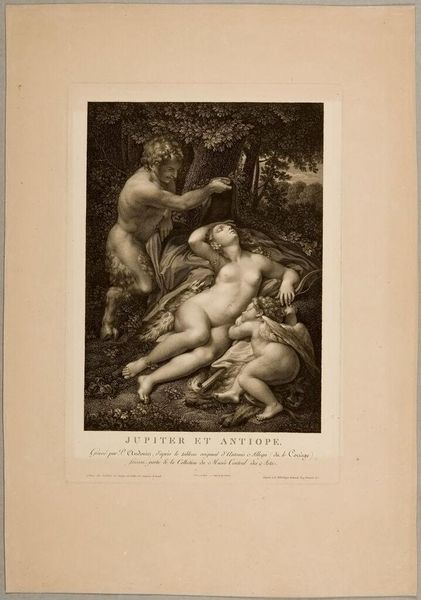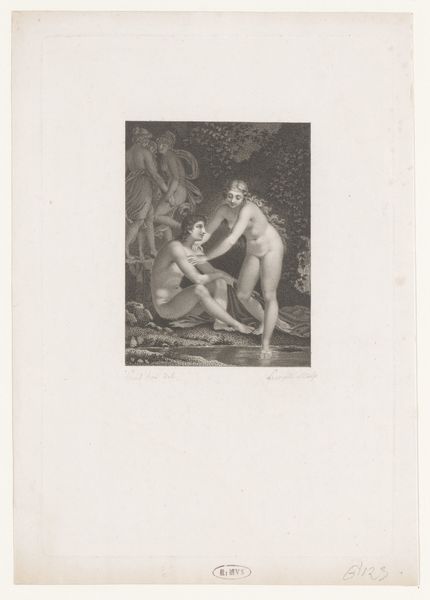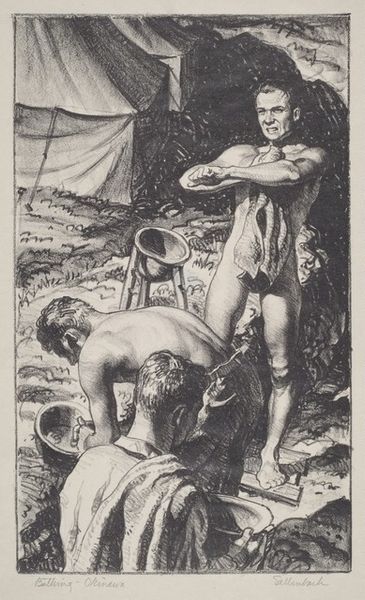
print, woodcut, wood-engraving, engraving
#
narrative-art
# print
#
figuration
#
woodcut
#
history-painting
#
academic-art
#
wood-engraving
#
engraving
Dimensions: 8 x 5 5/16 in. (20.32 x 13.49 cm) (image)12 1/8 x 9 1/2 in. (30.8 x 24.13 cm) (sheet)
Copyright: No Copyright - United States
Editor: Here we have Timothy Cole's "Aeneas Group," a print from 1891 held here at the Minneapolis Institute of Art. There's a somberness to the scene, rendered so delicately with the engraving, but what strikes me most is the almost operatic drama of it all. What's your take? Curator: It's interesting that you use the word "operatic." This piece, and Cole's work generally, gains much of its significance from its institutional context. These prints were made during the "Golden Age" of wood engraving and published in magazines. Consider how Cole’s work allowed mass audiences to experience classical masterpieces reproduced for the burgeoning middle class. How does that context influence your viewing? Editor: So, this wasn't about Cole's individual expression so much as democratizing access to high art? Did this somehow challenge or reinforce the status quo in the art world? Curator: Precisely. Reproduction was a controversial subject. Think about the role of institutions in shaping taste and artistic value. Were these prints seen as genuine art, or merely imitations that diluted the power of the originals? Was Cole seen as an artist in his own right? How might social class influence that? Editor: That’s fascinating! I hadn't considered the social impact of reproducing artworks on this scale. I guess I had naively viewed it through a purely aesthetic lens. It gives the work another, deeper layer. Curator: Exactly. And those layers tell us so much about not only art history but cultural history. Editor: This has really opened my eyes to the importance of context. I'll never look at a print the same way again!
Comments
No comments
Be the first to comment and join the conversation on the ultimate creative platform.
